The State of SanDisk
by Kristian Vättö on December 5, 2014 8:00 AM EST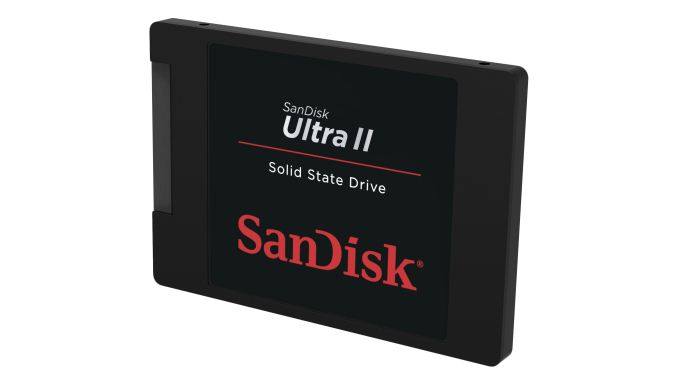
Back at Flash Memory Summit I had the opportunity to meet with all the key people at SanDisk. There is a lot going on at SanDisk at the moment with the Fusion-io acquisition, TLC NAND, and other things, so I figured I would write a piece that outlines SanDisk's current situation and what they're planning for the future.
I'll start with the client side. For SanDisk the big topic at this year's Flash Memory Summit was TLC NAND and we were given a sneak peek of the SanDisk Ultra II back at the show, which was then released a few weeks later. Since we have already reviewed the Ultra II, I'm not going to talk about the drive itself and its technical merits, but there are a few things that Kevin Conley, senior vice president and general manager for SanDisk's client business brought up about TLC and the client market in general.
I'm sure most of our long-time readers remember how SSD prices plummeted between 2010 and 2012. The reason for that wasn't a breakthrough in NAND technology, but merely the fact that all manufacturers increased their manufacturing capacity with the expectation of exponential NAND demand growth. As you can see in the graph above, the industry bit growth was over 60% year-over-year between 2010 and 2012, which lead to oversupply in the market and deflated the prices.
The reason why all NAND manufacturers invested so heavily on capacity increases was the popularity of smartphones and tablets; it was expected that the average storage capacity would increase over time. Basically, the NAND manufacturers assumed that decreases in NAND prices due to smaller lithographies would translate to higher capacity smartphones and tablets, but in fact the mobile companies chose to save on onboard storage and invest in other components instead (camera, SoC, etc.).
It's only been recently that smartphone and tablet manufacturers have started to increase the internal NAND and offer higher capacity models (e.g. the 128GB iPhone 6/6+), but even today the majority of devices are shipping with 16GB, which is the same capacity that the low-end iPhone 3GS had when it was introduced in 2009. Of course a large reason for the reduced sales of higher capacity smartphones/tablets has a lot to do with pricing, where 32GB devices often cost $100 more than the 16GB model.
Since the NAND manufacturers are now adding fab space at a slower pace, they are looking for alternate ways to increase bit growth and scale costs down – and that's where TLC kicks in. Because TLC packs in 50% more bits than MLC (three bits per cell instead of two), increasing the share of TLC production is an efficient way to boost bit growth without additional fab investments.
Currently about 45-50% of SanDisk's NAND production is TLC and by next year TLC will be overtaking MLC in terms of production volume. Note that SanDisk will have 3D NAND ready in 2016, so the graph doesn't imply that SanDisk will move to TLC-only production in 2017 – it is just the 2D NAND production moving to TLC since it will mostly be used in applications like USB flash drives and other low cost devices, while 3D NAND will be used in SSDs.
TLC will also be one of the driving forces behind average capacity increase. The main obstacle in SSD adoption is obviously the cost per gigabyte, and the lower production costs of TLC will help to bring the prices down. I think it's too early to say what kind of impact TLC will have on prices because currently there are only two drives available (SanDisk's Ultra II and Samsung's 840 EVO), but once more OEMs are ready with their TLC SSDs later this year and early next year, I believe we will see more aggressive pricing.
One of SanDisk's presentations at the show had a very interesting slide about the company's internal SSD deployment program. The question that is often debated when it comes to SSD endurance is the number of gigabytes that a user writes per day. There aren't really any studies with large sample sizes, but SanDisk's own study provides an interesting insight into typical office workloads.
What the data shows is that a typical office user only writes about 7GB per day on average and the number of people that write over 20GB is only a few percent, so very few users actually need more endurance than what TLC SSDs can offer (~20GB/day). Of course, everyone's usage is different and I doubt SanDisk's data takes e.g. media professionals properly into account, but it is still interesting and valuable data nonetheless.
Another thing I discussed with SanDisk was the obstacles for higher SSD adoption rate. While there is growth, the attach rate in the consumer space is still fairly modest and will remain as such for the next few years at least. Price is obviously one of the most important factors as hard drives are still an order of magnitude cheaper when measured in price per gigabyte, but I'm not sure if absolute price and capacity are the only hurdles anymore. I mean, 256GB is more than sufficient for the majority of users – especially now that we live in the era of Netflix and Spotify – and at ~$100 it's fairly affordable, so I think we have reached a point where the price is no longer the barrier preventing users from upgrading to SSDs.
This is actually the part where we ask for your, our readers, help. What is it that we or manufacturers like SanDisk could do to boost the SSD penetration in the market? Would live demonstrations at malls and other public places help? Or upgrade programs where you could take your PC to a store and they would do the upgrade there for you? Let us know your ideas in the comment section below and I'll make sure to bring them up with SanDisk and other SSD manufacturers. Remember that we are talking about the masses here, so think about your parents for instance – what would it take for them or other people who are not very comfortable around computers to upgrade their PCs with an SSD?
The one huge problem is of course the PC OEMs and convincing them to adopt SSDs for mainstream laptops. The race to the bottom practically killed the profits in the PC industry, which is why most of the mainstream (~$400-600) laptops have such a bad user experience (low-res TN panels, cheap plastic chassis, etc...). With already razor thin margins, the OEMs are very hesitant about increasing the BOMs and taking the risk of cutting their already-near-zero margins with SSDs. I know SanDisk and other SSD OEMs have tried to lobby SSDs to the PC OEMs as much as possible, but anything that adds cost gets a highly negative response from the PC OEMs.


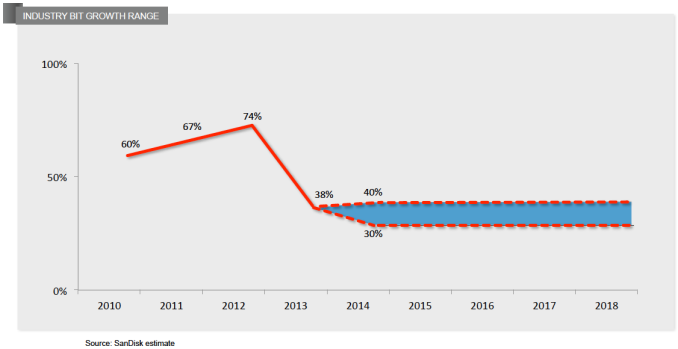
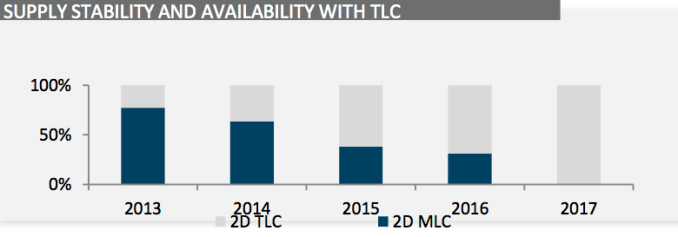
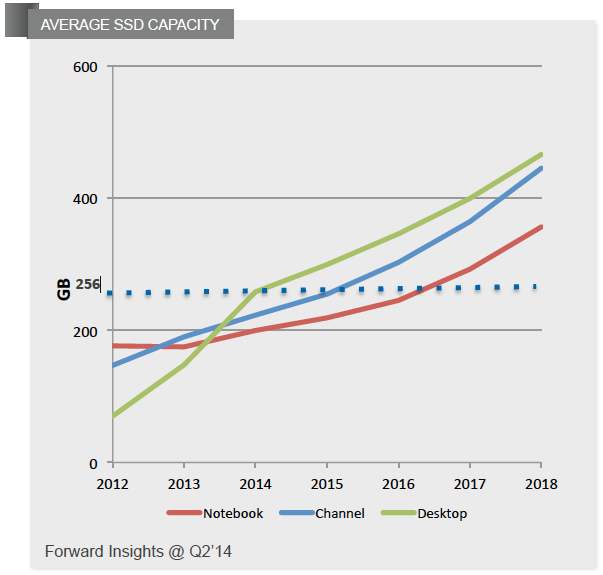
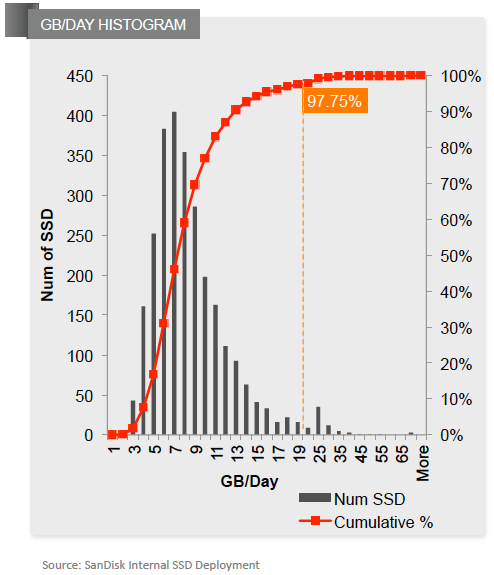









132 Comments
View All Comments
Runamok81 - Saturday, December 6, 2014 - link
My chief concern here is not with an improper vendor relationship. The relationship is fine. I understand Anandtech will NEED vendor relationships to continue providing stories about new technologies. It's not about that. It's about the content. I read the story. This is all FMS had to offer? Nothing about super fast PCIe drives? NVMe? SanDisk didn't send any engineers to talk about how their acquisition of FusionIO is going to make for some new kickass products? No, they only sent the B team marketing crew to give SanDisk's account of their own market challenges and the projected cost of Toggle NAND? Who cares? Don't you think it's a bit presumptuous and naive to think that our "marketing ideas" --and don't delude yourself.. that's what you asked us for-- are going to somehow outfox the prevailing market forces? No, sorry. Bootstrap up and lower Prices or increase capacity / speed. I'd much rather read about those types of advances. Until then, I could care less about "the state of Sandisk"Kristian Vättö - Saturday, December 6, 2014 - link
I did talk about SanDisk's NVMe strategy on the second page, but you have to understand that no company is just going to spill out all their secrets and roadmaps. John is the head of the enterprise team (including engineering) while Kevin leads the client side, so neither of them is part of a "B team marketing crew".Runamok81 - Saturday, December 6, 2014 - link
I get that you're establishing credibility, but I care as much about John's and Kevin's titles as they do. Where's the news here.. and what is this Page 2? What Page 2? .. *looks* oh ... OH! Well, then, uh.. that uh explains a lot. *readingreadingreading*...NVMe..FusionIO...UltraDIMM.....*Final Words... ffffffffffffffFFFFUUU!I owe you one beer. I'll go bang my head on rock. Thank you.
Runamok81 - Saturday, December 6, 2014 - link
Also, thanks for replying to me. Sorry for being an ass.eanazag - Friday, December 5, 2014 - link
The problem is the OEMs. They let accounts run product development and wonder why the experience sucks. OEMs have their heads up their ___es. There is no good reason why Apple's market share has risen so much on the PC. The reason is because they have innovated AND marketed. They add something and tell why it's good. Apple is not perfect at all, but they haven't ruined their premium branding.HP bought Voodoo and killed the brand.
Dell bought Alienware, but didn't kill the brand. Dell hasn't done great at promoting it either. Dell has XPS, but lacks the balls to standardize SSDs in that series. Partially because of capacity. Whereas Apple has the fusion drive (128GB SSD + 1TB HDD). This is the idea that will enhance adoption in cost sensitive areas. MS Windows needs to help the OEMs out here as Intel has already done their part.
Samsung's product lineup is asinine. I looked at their 900 series laptop about a year or two ago and it had that software caching. I think it was an 8GB cache.
Lenovo does decent in product features. I just don't trust a totally China owned company. I don't trust the others much either, but Lenovo even less.
Sony had great battery life before Haswell and Broadwell, but who knew about it. Their service was meh.
Speed is not the only benefit of SSDs. Durability is another when it comes to drops. PC OEMs have jacked up the prices too high for the SSD upgrades. It is often cheaper to buy and upgrade yourself and save money then the upgrade fee Dell was asking and you get the retail bells and whistles that Samsung provided (software utility). Intel did a crappy job of getting OEM wins for their SSDs in the client space, which I can't explain.
I have ensured all the PCs I support have SSDs in them as we have replaced since 2009. It makes my support call much faster. 4 year old PCs aren't total dogs in the last year.
Take note PC OEM an AMD APU plus an SSD is a perfect low cost laptop. AMD CPU performance is almost good enough; the GPU performance is good enough. Add a decent screen 1600x900 is enough to differentiate in this current market.
Apple has been first to PCIe SSDs after dropping HDDs in their laptops altogether. Apple will lead the pack in WiFi AC spec roll out. Apple has made Intel worried that they would put Arm cores in their notebooks, so Intel has been driving down power usage. Who is using the overpriced Crystalwell SKUs? Apple. Crystalwell is a gem that Intel has priced too high and then keeping it from the channel was nonsensical too. Apple is the reason why PC OEMs even consider putting high res and IPS displays. I have pulled apart an Apple device (x86) or two and I like the build quality. I don't like non upgradeable innards especially on the Mac mini; that was uncalled for. The Mac Pro is priced way too high.
Congratulations PC OEMs! Your crappy build quality has made Apple's hardware seem reasonably priced.
The real problem is people are dumb. They buy something and then complain about how slow it is. You tell them that they could have upgraded and you get a blank stare. The black Friday deal didn't have an SSD.
All over the place when I'm rantin' and rollin'.
azazel1024 - Friday, December 5, 2014 - link
Honestly I don't know that there is a way, other than doing what they are now, pushing the prices further down. I love cheaper of course, but I am waiting for the tipping point of capacity versus price where it makes sense to replace bulk storage with SSDs instead of using HDDs.I don't need much, but I still have ~2TiB of storage and call it 3TiB for short/medium term growth (say, 24 months of growth capacity). Times 3 for desktop, server and then backup to mirror my data. At current prices, that is around $3,000. Also many drives. My price point would be much closer to $.10 per GB instead of .30-.35 per GB. At $1,000 for all of it, I could seriously consider it. Take out the backup and leave that spinning disk and for my desktop and server, ~$600 for both for the reliability, long life, low power, no-defrag requirements and high speed of SSDs and I'd jump on SSDs for bulk storage.
Still 3-5 years away from that the way things are going. Until then, all you'll see me do is the "minimum" to get my OS and applications off spinning disk (which I've already done). 120GB SATA3 and 60GB SATA2 drive in my desktop, 128GB SATA3 drive in my laptop. Maybe in a future upgrade I'll get a couple of 128GBs in my desktop in RAID0 for performance. Maybe.
eanazag - Friday, December 5, 2014 - link
Where are Sandisk's OEM wins with SATA drives in the client space? Why the hell is Dell packing Liteon SSD drives in their Latitude lineup? Dell uses Samsung also, but I get that. Apple has been known to roll with Samsung and Toshiba SSDs. I don't see why Sandisk couldn't have done better in the OEM space.OEMs need to up the ante on at least one of their product lines and then communicate that to customers. OEM to customer: "We're including SSDs, display, and build quality. Hey! We're even going to support you 18-24 months with North America support and a replacement device in a week as opposed to 3-4 weeks. In this series you can expect cutting edge tech, quality, and support." What PC OEM is doing that? That is why they fight over the bottom. There has only been cutting corners over the years.
metayoshi - Friday, December 5, 2014 - link
"This is actually the part where we ask for your, our readers, help. What is it that we or manufacturers like SanDisk could do to boost the SSD penetration in the market?"It definitely has to be getting the OEMs to start dropping HDDs. I mean, you mention the masses, and I believe it's really just that. The masses don't go to Newegg or Fry's and buy an SSD to upgrade their systems, and they also don't go to those sellers to build their own computer. They go to Best Buy, Target, etc. and buy the cheapest pre-built system they can find, and as long as it does Office and go on the internet, they're pretty much set. They don't care that it has a 5400 RPM or 7200 RPM HDD or SSD in there. They see 500 GB, and believe it's good for them.
At any given capacity, an HDD will always be significantly cheaper, and that's where OEMs will go because that's where their systems sell. Just as you said, they also use low res 1366x768 TN panels because it lowers the price even more. We call it a bad user experience. To the masses, it's just another cheap laptop that can do Microsoft Office and go on the internet. That's all they need. It's not necessarily a bad thing, but that's what's on the market today.
In the end, it'll be OEMs that will cause the client market to start adopting SSDs at a higher rate. Once OEMs can offer products in the $200-$500 and only have SSDs, that's when client SSDs will really boom. For now, I think it's expected that only enthusiasts or people willing to spend closer to $1000 or more on a system will be getting SSDs by default. As SSD prices go down, that may probably change. Even Apple is providing SSD only options for its recent Macbook Air/Pro line, but they are still in the $1000 and above range. Eventually, it should reach the Dell Inpirons and HP Pavilions of the future, and that's what the masses will get. I don't believe HDDs will go away entirely, as they will always be cheaper for more capacity, and that's where big datacenters are moving and external storage is always great, but I can see SSDs becoming cheap enough that the consumer products may just be SSD only. We'll see though. It's only a matter of time when SSDs become really cheap. I just don't know how long that time is.
toyotabedzrock - Friday, December 5, 2014 - link
The problem is that on the low end machines you do not have any SSD options. Even on midrange machines there is no SSD option.Second problem is uefi and how do you move your laptop to an SSD without loosing recovery partitions etc. With older systems I only had to worry about Windows activation.
Third, people still want big storage, where are the 128gb SSD / 1TB drives and why is MS not implementing software to handle the drives as one?
toyotabedzrock - Friday, December 5, 2014 - link
One last suggestion rebrand the prosumer products as Fusion io. When I think of sandisk I think of cheap thumb drives and memory cards.